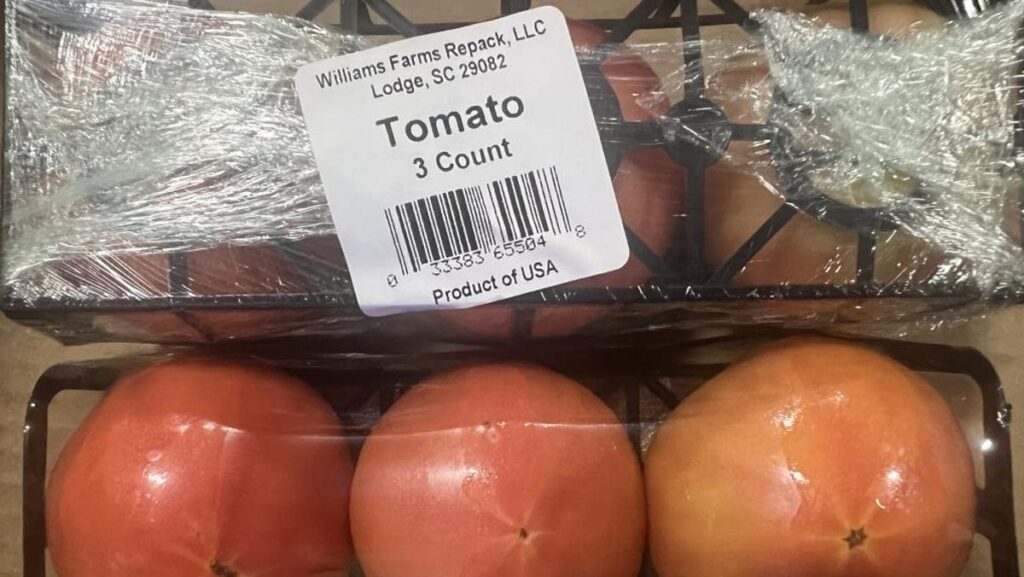The recent recall of vine-ripe tomatoes due to potential salmonella contamination has raised concerns among consumers and food safety experts alike. With hundreds of thousands affected annually by foodborne illnesses, knowing how to handle such recalls is crucial for public health. This article explores the details surrounding the latest tomato recall, provides safety guidelines, and discusses how consumers can protect themselves against foodborne illnesses.
Understanding the Tomato Recall
On May 2, Williams Farms Repack LLC, based in Lodge, South Carolina, initiated a recall due to concerns about possible salmonella contamination in tomatoes distributed to Georgia, North Carolina, and South Carolina. The tomatoes, shipped between April 23-28, were sourced from H&C Farms and were packaged for wholesaler distribution before being flagged for potential contamination by Southeast Tomato Distributors on April 29.
The recalled tomatoes were sold under either the Williams Farms Repack or H&C Farms labels, featuring various sizes and packaging, primarily bulk packages of tomatoes. Notably, no illnesses have been reported to date. However, the Food and Drug Administration (FDA) emphasizes the importance of consumer awareness and vigilance during such recalls.
Details on the Affected Products
The tomatoes subject to the recall are categorized in several formats:
- Tomatoes 5×6, 25 pounds
- Tomatoes 6×6, 25 pounds
- Combo Tomatoes, 25 pounds
- Tomatoes 4×4, 2-layer
- Tomatoes 4×5, 2-layer
- 60-count tomatoes in various configurations
- 3-count trays with UPC 0 33383 65504 8
- XL tomatoes in 18-pound packages
Consumers are advised to check their purchases against this list and return any affected products to their points of purchase for a full refund. The FDA also suggests discarding any recalled items to prevent health risks.
What is Salmonella and Its Effects?
Salmonella is a type of bacteria that is infamous for causing foodborne illnesses. It can lead to severe infections, particularly in vulnerable populations such as young children, the elderly, and individuals with weakened immune systems. Common symptoms include:
- Fever
- Diarrhea, which can be bloody
- Nausea and vomiting
- Abdominal pain
In rare instances, salmonella can enter the bloodstream, resulting in life-threatening conditions such as arterial infections and endocarditis. Consequently, public health authorities urge individuals to be diligent about recalling food items and understanding the risks associated with food contamination.
Safety Guidelines for Consumers
The FDA has laid out clear recommendations for consumers in the wake of food recalls such as the recent tomato case. Here’s how to stay safe:
- Verify Food Labels: Always check product labels for recalls, especially if you routinely consume tomatoes or related products.
- Report Symptoms: If you suspect you have consumed contaminated food and experience symptoms, contact your healthcare provider immediately.
- Practice Good Hygiene: Wash your hands thoroughly after handling food and ensure that all vegetables are washed before consumption.
- Return Affected Products: Return any recalled products to your point of purchase or discard them safely to avoid accidental consumption.
The Role of the FDA in Food Safety
The FDA plays a critical role in ensuring the safety of food products offered to the public. Through its ongoing monitoring and recall systems, the FDA aims to protect consumers from contaminated foods. In situations like the recent tomato recall, the FDA collaborates with manufacturers and distributors to trace the source of contamination while ensuring clear communication with consumers regarding the risks involved.
Preventive Measures for Future Recalls
To minimize the risk of exposure to contaminated foods, consumers can adopt several preventive measures:
- Educate Yourself: Stay informed about recalls through the FDA’s website and follow food safety news.
- Maintain Cleanliness: Ensure cleanliness in your kitchen and storage areas to prevent cross-contamination.
- Cook Thoroughly: Cooking foods at appropriate temperatures can kill harmful bacteria, including salmonella.
- Watch for Symptoms: Be alert for symptoms of foodborne illness, taking action if they occur.
By following these measures, consumers can reduce their risk of illness and stay informed about potential food safety threats.
Conclusion
The recent tomato recall highlights the ongoing challenge of food safety in our modern food supply chain. Salmonella poses a significant threat, particularly to vulnerable populations, and understanding how to navigate recalls is crucial for protecting our health. As consumers, remaining vigilant and informed can help mitigate the risks associated with foodborne illnesses. We encourage everyone to take the necessary precautions to ensure their food is safe, especially during recall situations.
For updates on future recalls and additional information on food safety practices, keep an eye on reputable sources such as the FDA’s official page.
Furthermore, industry stakeholders must continue working together to ensure practices and standards are in place to minimize future risks of food contamination.

